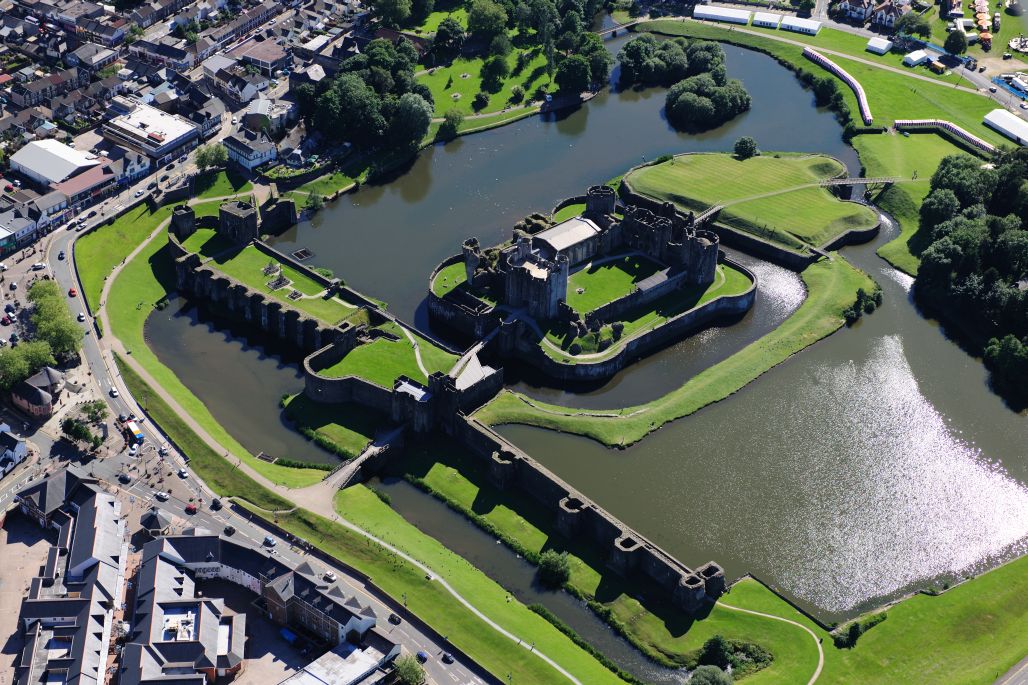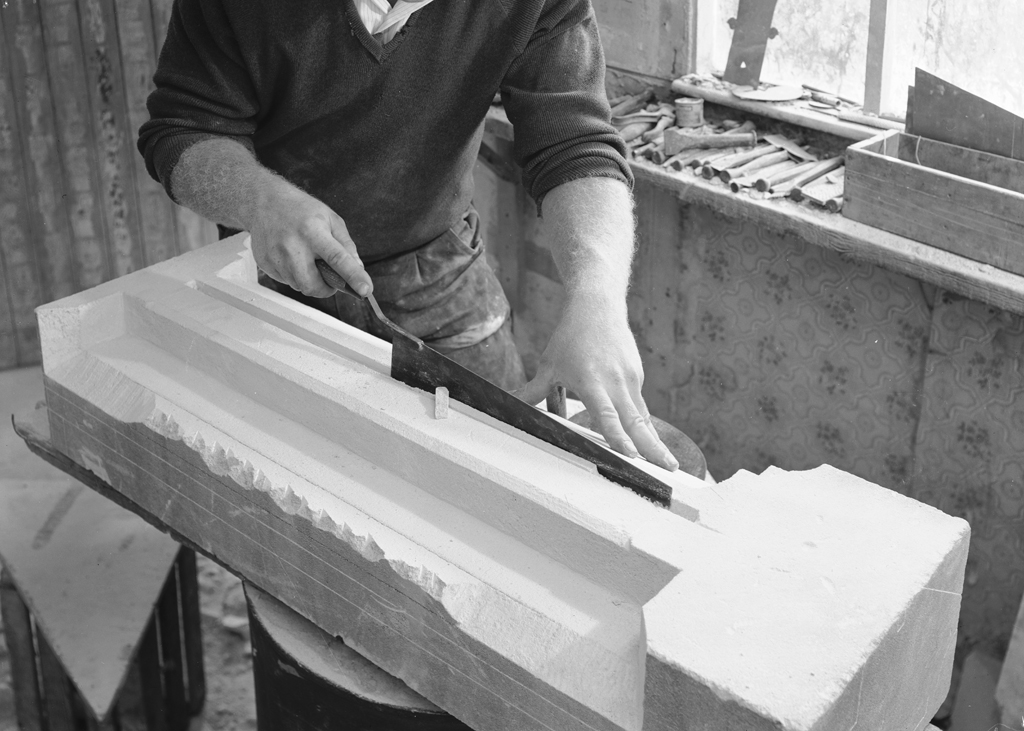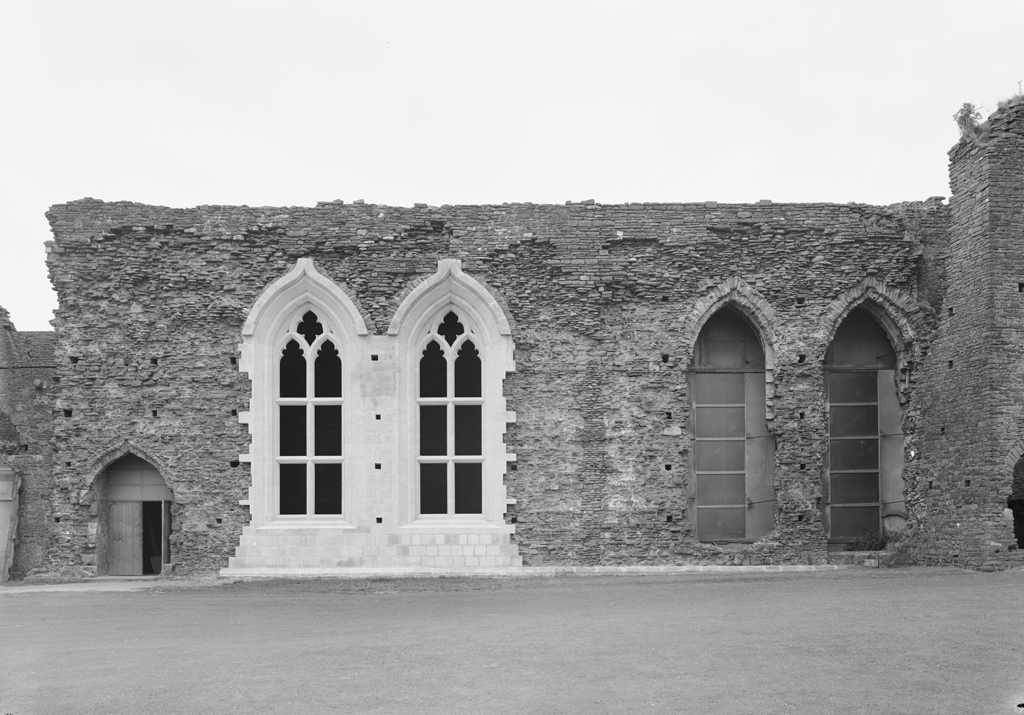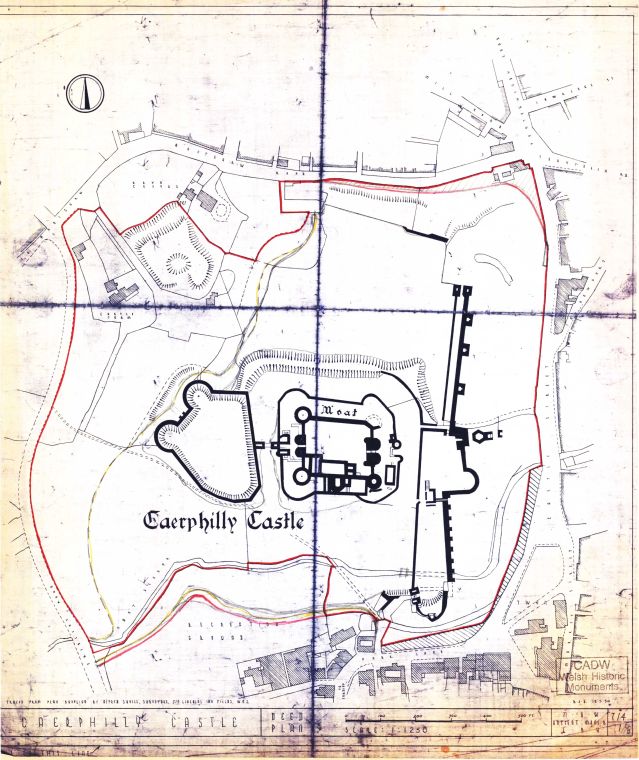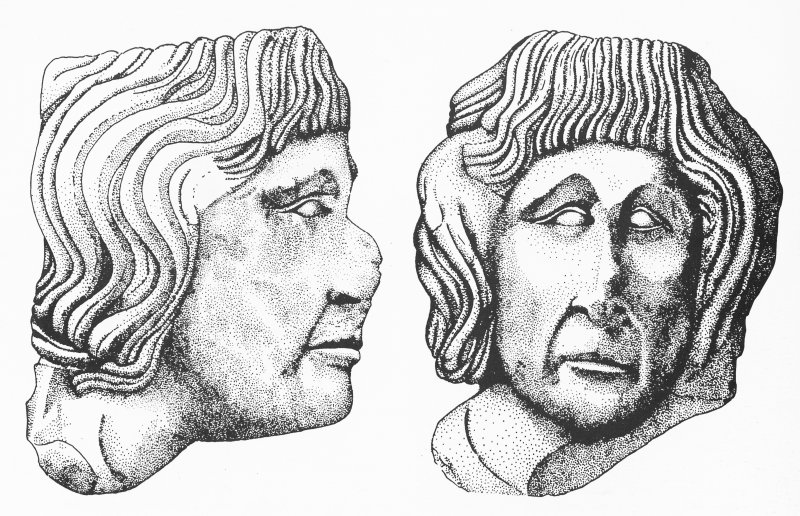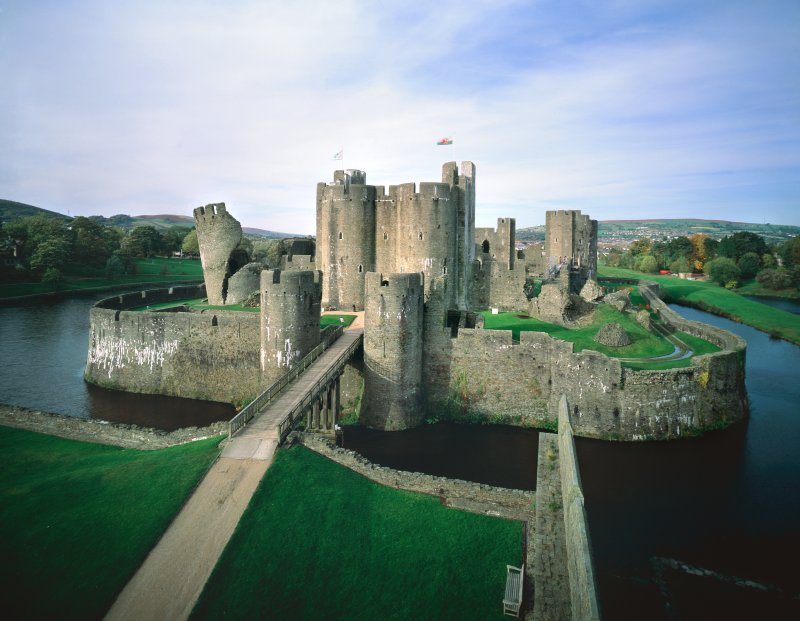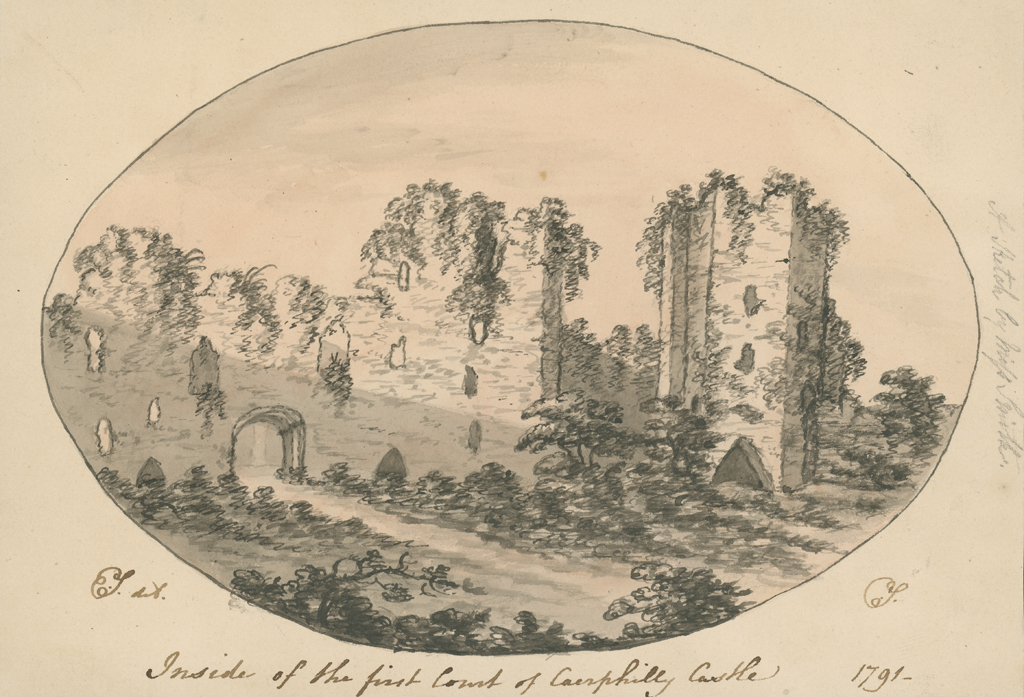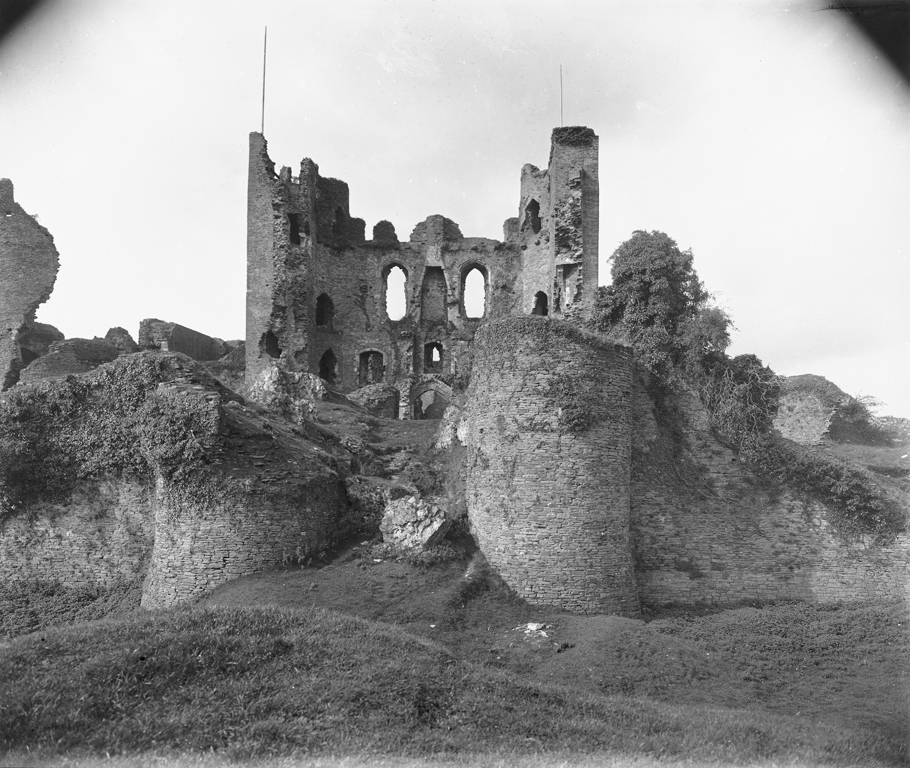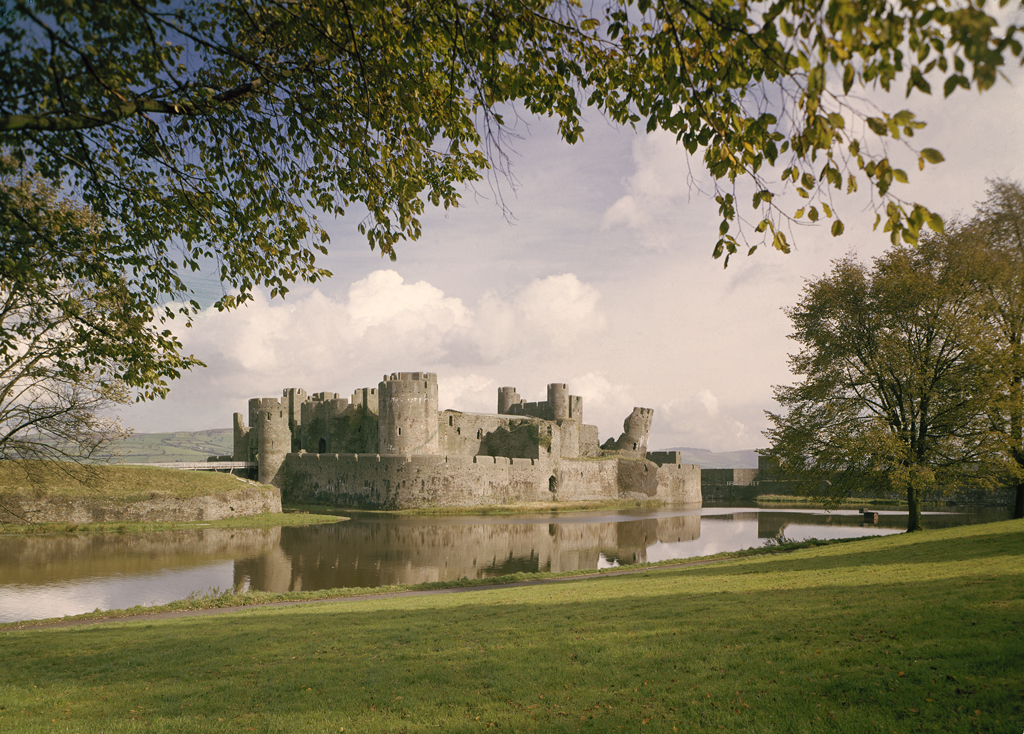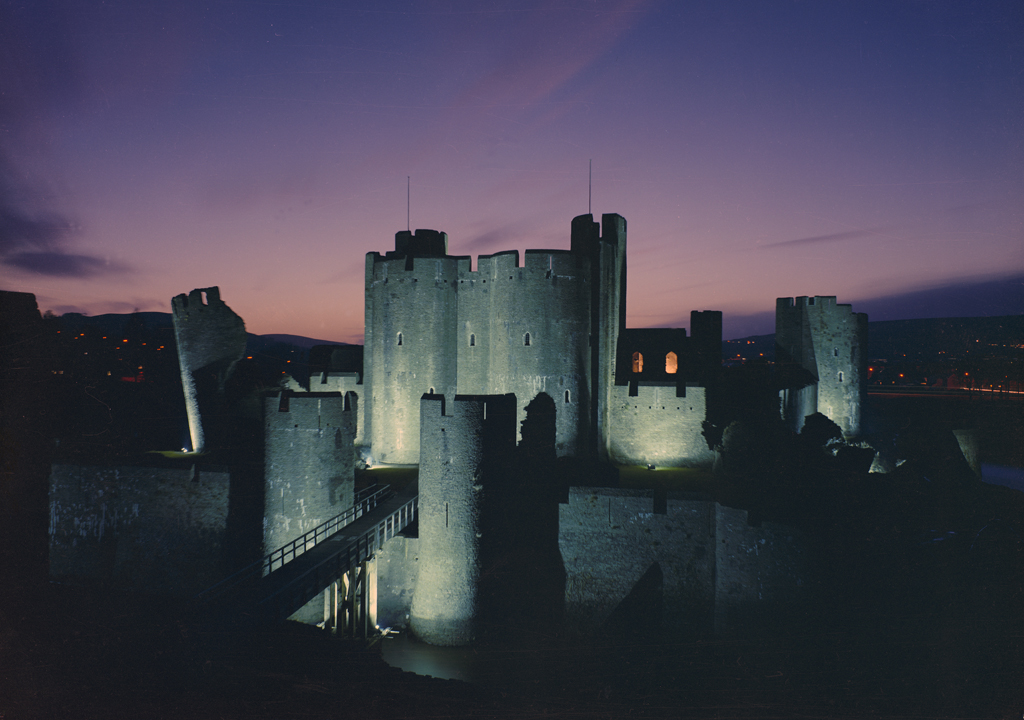Caerphilly Castle - Overview
Surrounded by two lakes, Caerphilly Castle is the largest castle site in Wales and the earliest example of a Norman fortification with a concentric design in Great Britain.
Although the Romans built an auxiliary fort here as early as 75 CE, it was abandoned again by the second century and for the next one thousand years, the site remained sparsely populated. In 1268, Gilbert de Clare, the Norman Marcher Lord of Glamorgan, commissioned the construction of the stone castle. Over the next three decades, the concentric castle and lakes were created, but with the death of Sir Gilbert in 1295, construction ceased almost completely. For a short period in 1326 the castle rose to prominence as the English king Edward II sought refuge here from his estranged wife, Queen Isabella, and her partner, Roger de Mortimer. In the fourteenth century, the castle passed into the hands of Richard Beauchamp, Earl of Worcester, but it was abandoned and fell into disrepair as he made Cardiff Castle his chief residence. In subsequent centuries, the decay of the castle was accelerated by the draining of the lakes and the removal of stone for the purpose of renovating Thomas Lewis’s nearby house.
In the Romantic period, Caerphilly was frequently the first castle ruin tourists would encounter on their arrival in Wales as it is situated so close to the Welsh border with England. Like the Austrian count Gottfried von Purgstall, the size and spread of the castle reminded many travellers of the nearby situated ruins of Tintern Abbey. Much unlike its sacral cousin further east and most other ruined castles all over Wales, however, Caerphilly Castle was not covered in ivy and green vines.
Since 1844, the year of Carl Carus’s disappointed visit to the ruins, which he found more desolate than beautiful, extensive conservation and restoration work has been carried out on the site. The lakes have been restored, tumbled down masonry has been put back into its original place and the Great Hall has been restored. Luckily for tourists today, the castle’s most prominent feature, the great leaning tower, remains untouched as it was found stable enough to withstand the pull of gravity.
Accounts of Travel
"Auszüge aus reisebeschreibenden Briefen des vorletzten Grafen von Purgstall", 1796
Gottfried Wenzel von Purgstall (1773 – 1812)
Caerphilly ist in Glamorganshire. Wenn die Gegend in Wales derjenigen, die sich zwischen Cardiff und hier zeigt, ähnlich ist; so ist es allerdings der Zeit werth, eine Reise durch dieses Land zu machen. ...
Das Castle in Caerphilly ist eine Ruine; größer als die Abby Tintern, doch ist der Eindruck derselbe. Die Aussicht durch die zerbrochenen Felsenstücke zeigt manche frappante Parthie. Ich bereue es, diese Ruine nicht nich den Abend vorher (denselben, als ich in Caerphilly ankam) besehen zu haben; die Nacht ist, däucht mich, geschickter, in diesen Überresten der Vorzeit herumzuwandeln. In diesem Schlosse befand sich Eduard [II]. Und hielt, wenn ich nicht irre, eine Zeit in selbem sich fest, während des Aufruhrs seiner Barone und der Königinn gegen ihn. Der Morgen war sehr schön, und die Luft so rein; ein Paar Stunden früher, bey’m Aufgang der Sonne, würde ich mit mehr Interesse auf dem Felsen herumgewandelt haben; allein man ist in allen Gasthöfen Englands so langschläferisch, daß man es nicht erhalten kann, geweckt zu werden.
Caerphilly lies in Glamorganshire. If the landscape in Wales is similar to that between Cardiff and here, then it is definitely worth one’s time to undertake a trip through this country. ...
The castle of Caerphilly is a ruin; larger than Tintern Abbey, but the impression is the same. The prospect from the broken pieces of stone presents many a striking vista. I regret not having visited the same on the prior evening (when I arrived in Caerphilly); the night, it seems, is more suitable for wandering around the remnants of antiquity. Edward [II] visited this castle. And if I am not mistaken, he stayed here for some time during the rebellion of his barons and the Queen against him. The morning was very beautiful and the air so clear. A few hours earlier, at dawn, I would have wandered around the rock with greater interest, but the English inns turn everyone into late risers who find it unbearable to be woken early.
England und Schottland im Jahre 1844, 1844
Carl Gustav Carus (1789 – 1869)
Einmal, auf einer Station, in Cer[p]hilly stießen wir noch auf eine weitläuftige, aber ganz in Ruinen liegende alte Burg. Sie ähnelte mehr den Ritterburgen Deutschlands, und mußte mit Pulver gesprengt seyn, denn ganze Massen Mauerwerk und ganze Stücken der Mauerthürme waren in die Gräben geworfen. – Das Ganze sah mehr wüst als schön aus – es fehlte zuerst das Schöne in der Anlage des Ganzen, und es fehlte dann der, sonst englische Ruinen so prächtig kleidende Epheu!
At one time, on a stop in Caerphilly we encountered the vast, but entirely ruined old castle. It closely resembled the medieval castles of Germany and must have been blown up by the use of gunpowder because entire sections of wall and whole pieces of the defensive towers had tumbled into the ditches. – The whole looked more desolate than beautiful. First of all, the compound was bare of anything that is beautiful and, second, the splendid cover of ivy usually found draped around English castles was missing.
(The King of Saxony’s Journey Through England and Scotland in the Year 1844. Trans. S.C Davison. London: Chapman and Hall, 1846)
